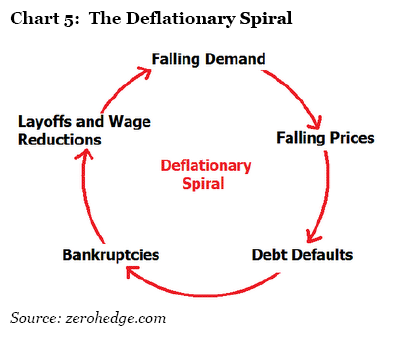-
Chapter 11: ECONOMICS OF INFLATION - DEFLATION
Inflation Deflation Facts
Aggregate demand in an economy is the sum of Consumption , investment , government procurement and net trade balance i.e. exports minus imports. Aggregate consumption in an economy is the total output by all firms in the country. When aggregate demand and supply are equally matched we get stable economy.
Inflationary Gap
When Aggregate demand exceeds aggregate supply in an economy the inflationary gap is created as demand for goods exceeds supply. Since full employment is assumed we cant create additional goods. Thus Demand Pull creates a inflationary gap.
Reasons:
- Increased money supply
- Increased propensity to consume i.e. amount from income spent by households
- increase in investment expenditure and exports.
Deflationary Gap
When the Aggregate demand is less than aggregate supply we get deflationary trend in economy. The supply has to be reduced to meet the demand.
The reasons for deflationary gap are decreased money supply, reduced government expenditure, increased propensity to save i.e. part of income saved by households, increase imports.
Inflationary spiral is a chain of events that worsen inflation and deflationary spiral are chain of events that worsen deflation.

Fig 1: Deflationary spiral
When a debtor borrows an amount and repays it later. The amount has lost
its value due to inflation. Hence the borrowed Rs 100 in 2010 and repaid
in 2015 have different value. In 2010 the purchasing power of Rs 100 was
higher than in 2015. Hence, Inflation favor debtor than creditor.
Phillip's Curve: Inflation is inverse relation to unemployment.
Stagflation: Economic situation where both inflation and unemployment rises.
CPI for Workers: Labor bureau in Chandigarh / Shimla
It compiles the CPI for industrial workers, rural workers and agriculture workers at All India levels. Base year for industrial workers CPI is 2001, rural and agriculture workers CPI is 1986-87.
Miscellaneous
Global Risks Report by World Economic Forum. Top 10 risks in terms of likelihood and impact and also categorize risks as per environment, geopolitical, societal, economic and technological.
Quiz
Score more than 80% marks and move ahead else stay back and read again!